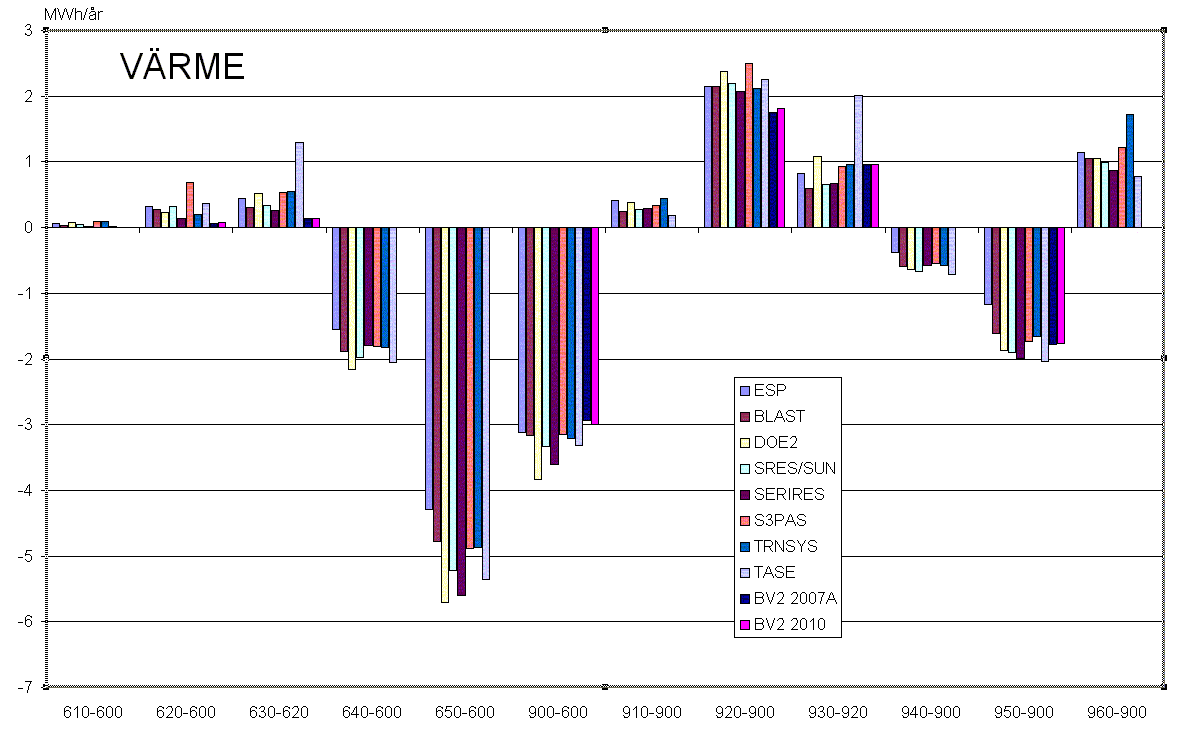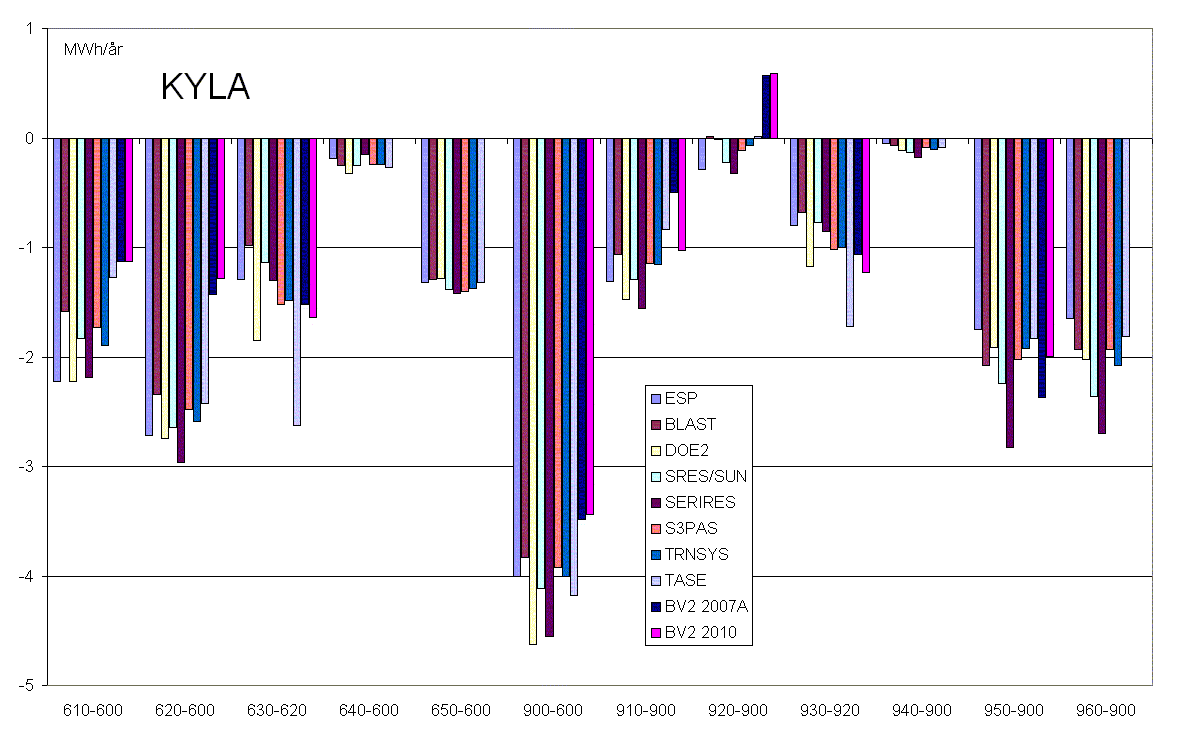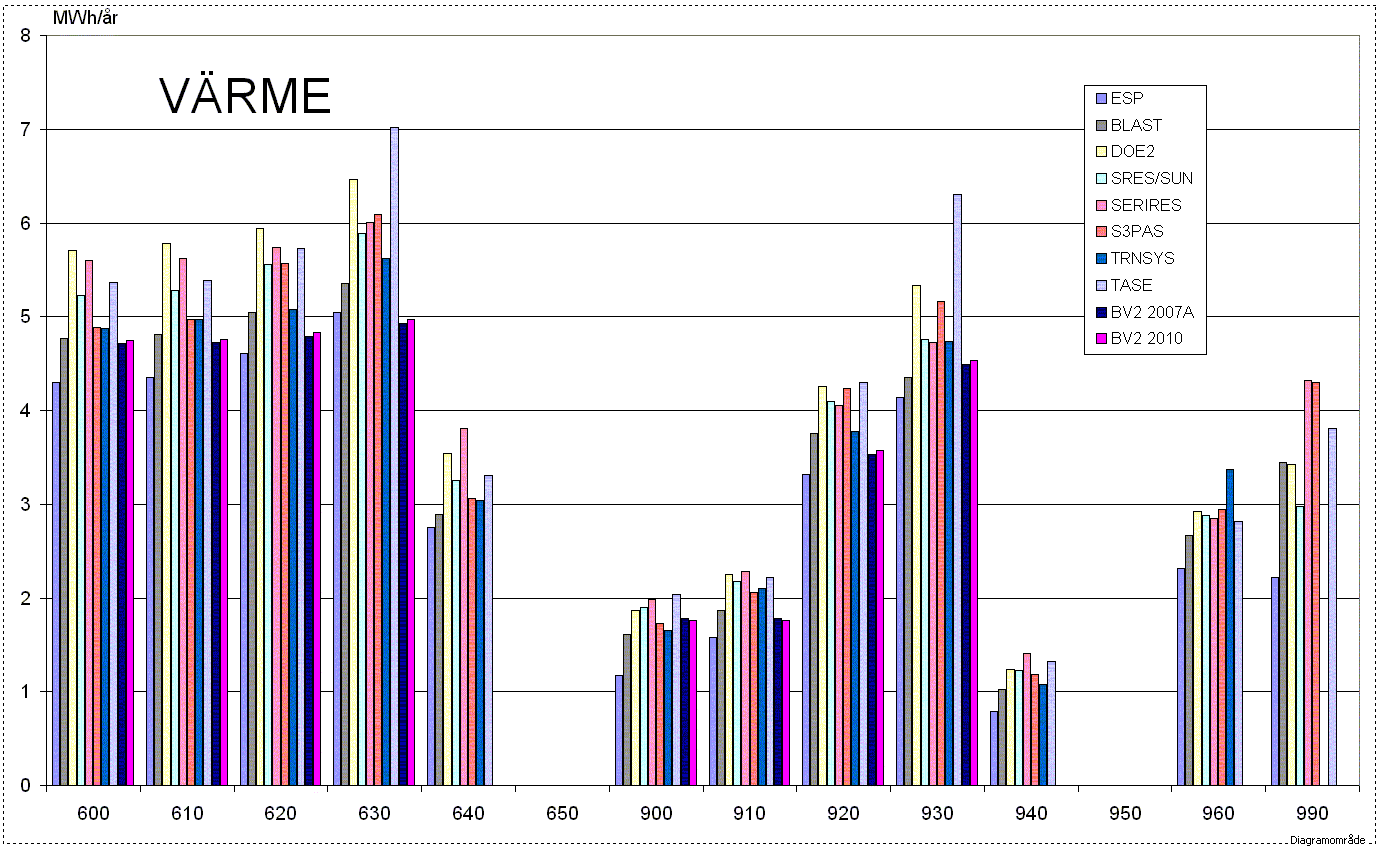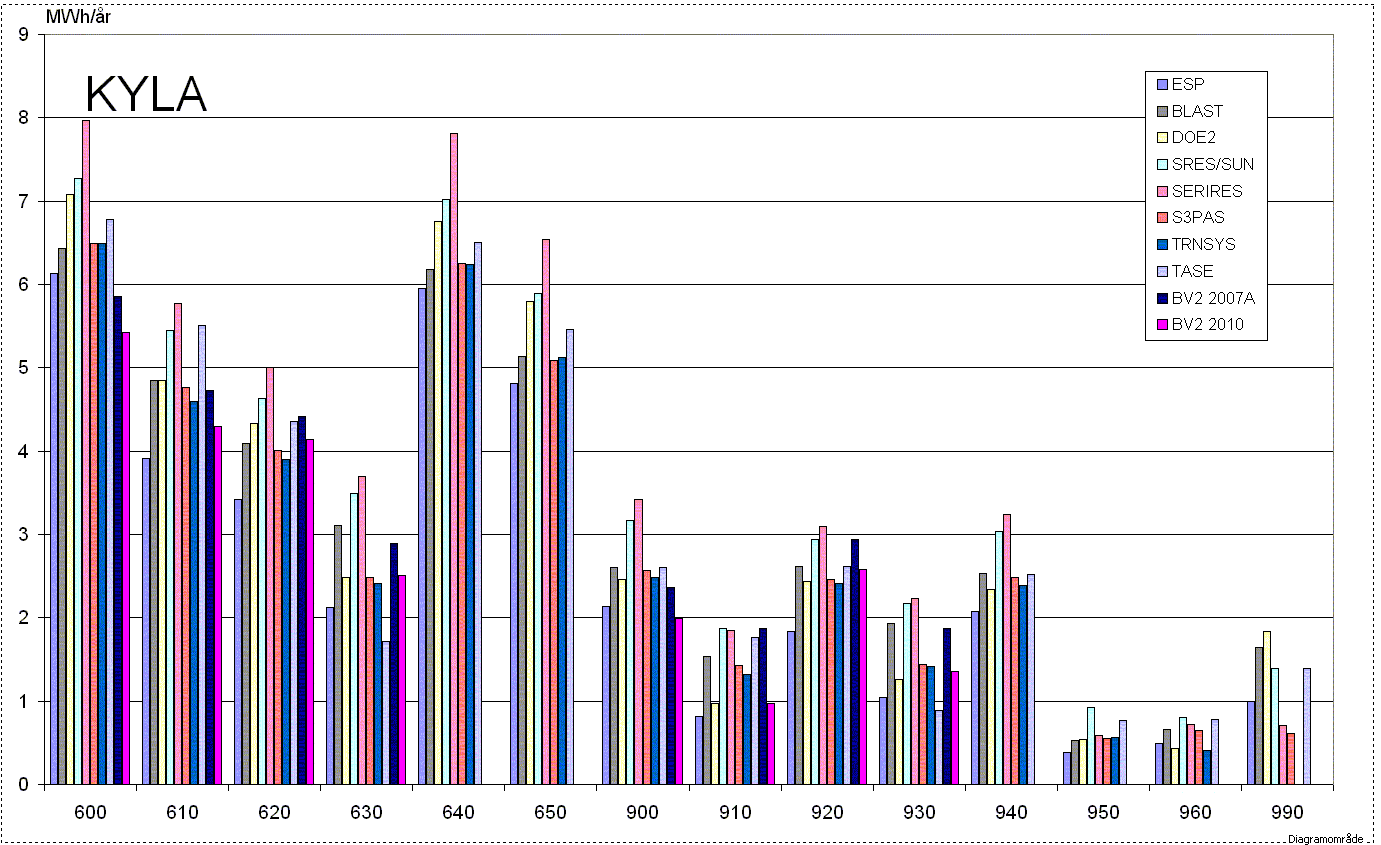BV2 Version | . |
Validation
Validation in general
Validation of a measurement program is to determine how closely the program calculates a certain value in relation to a given benchmark. A program designed to calculate energy consumption in a building contains a large amount of equations, where many of these equations are fully or partially connected to each other. The results of such a program are impossible to predict just by looking at all the equations. Undertaking validation is therefore important in order to confirm that the measurement program gives accurate results.
There are basically three ways to validate a measurement program: :
- Analytical Validation:
In an analytical validation, an application's equations and algorithms are tested to calculate different parts of a building's energy use. Reference values are typically derived from the recognized and established equations and algorithms in other calculation programs.
- Comparative validation:
Comparative validation compares the current program with one or more established and validated program. Usually the program's accuracy is tested by a fictitious construction estimate where heating and cooling requirements are compared. Reference values are then the result of one or more established and validated programs.
- Empirical validation:
Empirical validation means that the program's results are compared to one or more real building/buildings where the heat and the cooling requirement have been accurately measured.
Analytical validation is of importance to verify that the program's different parts calculate correctly. Comparative or empirical validation is used to ensure that the program calculates properly.
The problem of validation of the energy calculation program is that it is currently lacking well developed and established validation methods which could assess the program's various components and calculation routines. However, there is an internationally recognized validation method called BESTEST, which is developed by the IEA (International Energy Agency, Internationella Energiorganet in Swedish) and can be used to evaluate certain parts of an energy calculation program. IEA BESTEST [1] is a comparative validation method. IEA BESTEST’s methodology mainly tests construction specific aspects such as transmission, infiltration, radiation exchange, solar radiation, solar, building orientation and heat storage in building structures but also other aspects such as room thermostat and internal heat. IEA BESTEST does not include installation technical aspects such as how energy use is influenced by fans, pumps, heat recovery equipment, cooling and various types of heat-producing devices, such as heat pumps, solar collectors and boilers.
Other validation methods have been developed by the IEA, but these are not applicable to buildings in the Nordic climate. There is a great need for better and more comprehensive methods for validation of energy calculation programs. Especially as the EU directive on energy certification of buildings are implemented and Boverket’s (The National Board of Housing, Building and Planning) construction policy requires energy calculation of new buildings at the same time as the demand from the market increases for energy calculation programs. Development of validation methods for energy calculation programs is ongoing, both at the European and the international level. CIT Energy Management, which develops BV2, continuously monitors the development of new methods for validation. As soon as new methods for validation are introduced and become widely accepted in the industry, nationally, in the EU or internationally, we will validate BV2 according to the new methodology. In anticipation of these validation methods, BV2 continuous to be developed with new features and improvements for calculation procedures.
Validation of BV2
BV2 version 2010 has been validated according to IEA BESTEST. The results are reported below in two charts. One of them shows the annual requirements of heating energy and the other shows the annual requirements of cooling energy. For each calculation case there are nine bars which show the results for each case. The first eight bars are results of the programs that BV2 are compared to and the results of BV2 are located at the far right of each case. The eight programs that BV2 are compared to are carefully modelled and internationally established energy calculation programs from Europe and USA.
IEA BESTEST indicates no absolute values on when an application is deemed to be approved in the validation process. The criterion is that the program must be in the vicinity of the results of the eight reference programs. BV2 meets this criterion.
Some of the cases in IEA BESTEST means that:
- Heating or cooling of the test building shuts down completely during part of the day (cases 640, 650, 940 and 950)
- The test building has two zones, where one of the zone’s indoor climate is uncontrolled (960 cases)
- It is assumed that the program can calculate the soil temperature change underneath the test building during its first year following finished construction (case 990)
BV2 either doesn’t have input opportunities, or calculation algorithms to handle these cases. These cases do not reflect conditions in ordinary buildings, but are merely designed to test the measurement program. IEA BESTEST does not require that programs that are being tested must be able to handle all cases in order to be validated.

 Ladda ner simulerings Bestestfiler samt klimatfil. (zip packat)
Ladda ner simulerings Bestestfiler samt klimatfil. (zip packat)
Besides undergoing the IEA BESTEST, BV2 has been tested in other contexts.
- Doctoral dissertation on BV2, Chalmers [2]: BV2 is compared to the American internationally recognized program DOE-2 through both analytical and comparative validation. The results show a good match between the two programs.
- Report from the Department of Engineering, Chalmers [3]: BV2 is compared against a real building (Skandia office, Solna, Sweden) which is equipped with a VAV system. The results show a good match.
- Licentiate thesis, Chalmers [4]: The cooling energy requirement in BV2 is compared to IDA Climate & Energy for a radiant comfort cooling system. The results show a good match between the two programs.
Referenser:
[1] Judkoff R. and Neymark J., Building energy simulation test (BESTEST) and diagnostic method, Rep. No. NREL/TP-472-6231, US National Renewable Energy Laboratory, Palo Alto (1995).
[2] Nilsson P-E., Heating and Cooling Requirements in Commercial Buildings – A Duration Curve Model including Building Dynamics, Document D27:1994, Department of Building Services Engineering, Chalmers, Göteborg 1994.
[3] Ren, J. Verification of BV2 Building Energy Simulation Model. April 1996. Internrapport I42:1996. 12 sidor. Inst. f. Installationsteknik, Chalmers, Göteborg 1996.
[4] Voll H., Cooling Demand in Commercial Buildings – The Influence of Building Design, Technical report D2005:02, Building Services Engineering, Department of Energy and Environment, Chalmers, Göteborg 2005
If you whant to knew more about BV2 you are welcome to contact us
